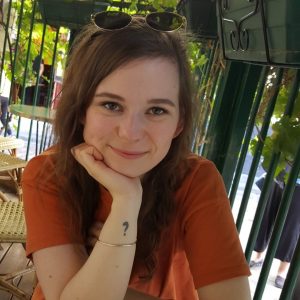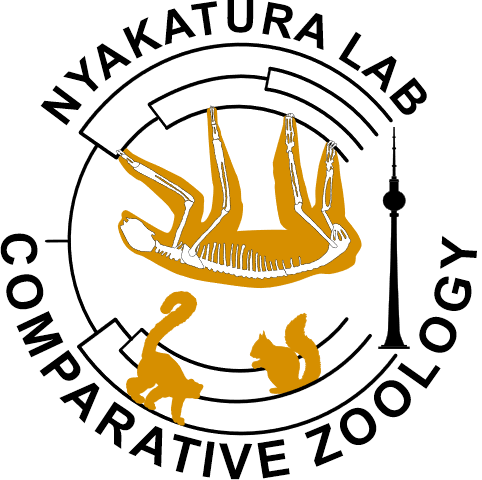Antonia Kaffler

- kafflera (at) hu-berlin.de
- antonia.kaffler (at) mfn.berlin
- +49 (0)30 2093-98232
- Antonia Kaffler @ Twitter
I’m Antonia, and I recently started my PhD on limb biomechanics in Carnivora. Since the first semesters of my bachelor’s, I’ve been fascinated by how bones and muscles form and connect. The way they work together in this perfectly fine-tuned system amazes me. I’m specifically interested in the evolutionary morphology and biomechanics of Rodentia and Carnivora. Which musculoskeletal adaptations allow these groups to climb, swim, dig, and run?
I did my bachelor’s Project at the Muséum National d’Histoire Naturelle in Paris, on the Project „Avineck- A neck for birds an arm for robots“. I mainly worked with the parrot as an example of how strongly birds can use their neck. The Project aimed to describe the specific morphological adaptations of the parrot’s (Psittaciformes) neck to their unique way of using it as a third leg. I analysed the possible neck movements by assessing X-ray photographs as well as identifying muscles, their arrangement, and forces by dissecting the specimen.
I graduated with a master’s in Organismic Biology and Evolution from Humboldt University in Berlin. During my Master’s, I worked as a Student Assistant for the Amniota Lab at the Museum für Naturkunde, Berlin. In this working group, I also wrote my Master’s Thesis on the relationship between skull roof bone microanatomy and ecological traits in rodents. I examined µCT Scans of rodent skull roofs and measured compactness, cross-sectional area and thickness of the bone. I looked for a correlation of these parameters with skull size, locomotion, and diet.
In my PhD project, I aim to explore the role of biomechanics in phenotypic diversification among mammals, focusing on the order Carnivora. This clade exhibits functional adaptations for various locomotor behaviours, including running, climbing, digging, and swimming. By integrating principles of functional morphology with phylogenetic comparative methods, I intend to establish connections between phenotypic variation and biomechanical functionality. I will use advanced techniques such as finite element analysis and performance landscape modelling to assess morphological features from a biomechanical perspective. I’m working on this project at the Museum für Naturkunde and the Nyakaturalab.
